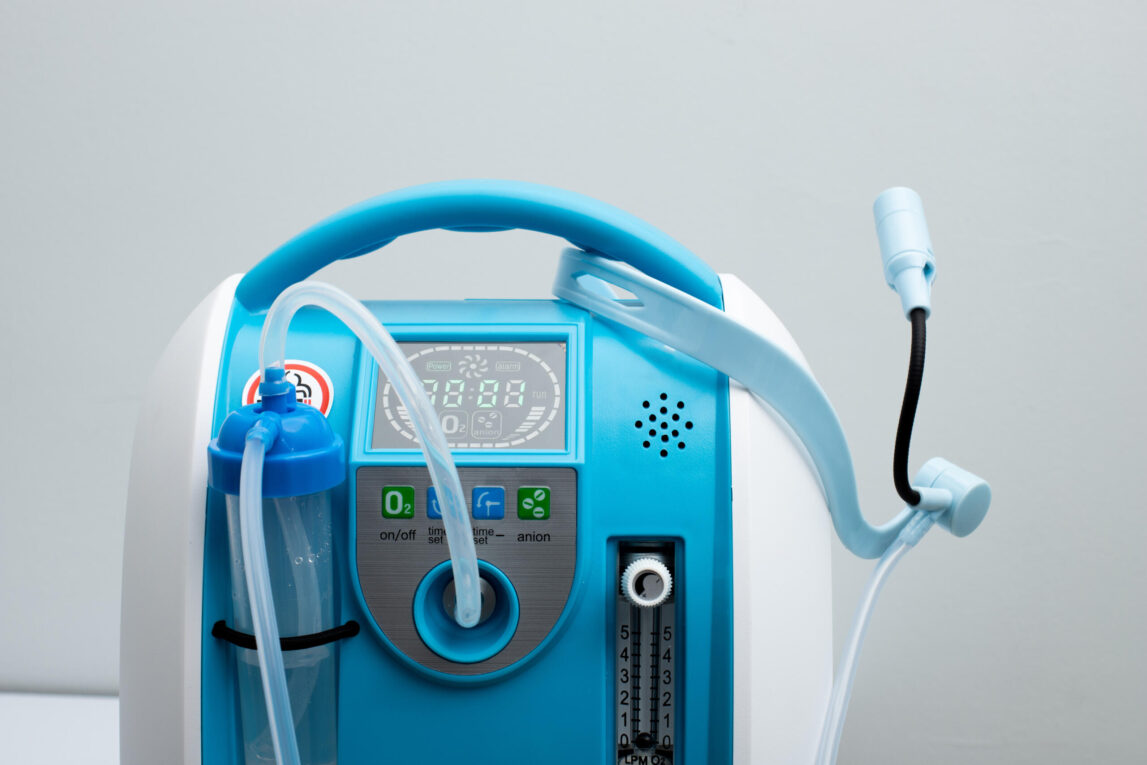Oxygen therapy has been used for centuries to treat various medical conditions that result in low oxygen levels in the blood. One of the most common and effective medical devices used today for oxygen therapy is the oxygen concentrator. Oxygen concentrators extract oxygen from the air and deliver a continuous flow of concentrated oxygen to patients through nasal cannulas or masks.
How Oxygen Concentrators Work
Oxygen Concentrator work through a process called pressure swing adsorption. They contain two zeolite columns filled with a material that selectively traps nitrogen from room air while letting oxygen pass through. When one column is adsorbing nitrogen, the other is desorbing nitrogen and producing an oxygen-enriched gas. The concentrated oxygen produced is 90-95% pure.
Modern concentrators use pulse wave or continuous flow technology to deliver the oxygen through tubing to the patient. Most portable units can produce 1-5 liters of oxygen per minute, while home units have higher capacities of 5-10 liters per minute. The oxygen is monitored continuously to ensure accurate, continuous delivery to the patient.
Common Medical Uses of Oxygen Concentrators
Oxygen concentrators are commonly prescribed for patients suffering from chronic obstructive pulmonary disease (COPD), cystic fibrosis, pulmonary fibrosis and other lung diseases where oxygen levels are low. They are also used for some heart conditions where oxygen delivery to tissues is compromised. Some key uses of oxygen concentrators include:
– COPD: For patients with emphysema or chronic bronchitis, oxygen therapy can significantly improve blood oxygen saturation levels, exercise tolerance and quality of life.
– Lung Cancer: For patients suffering from lung cancer, oxygen therapy can help relieve hypoxemia, increasing comfort during treatment and recovery.
– Pneumonia: In severe cases of pneumonia where oxygen levels remain low even after treatment, short-term oxygen therapy may be needed.
– Congestive Heart Failure: For patients whose damaged heart can’t efficiently pump blood to the lungs, supplemental oxygen eases the heart’s workload.
– Sleep Apnea: Nocturnal oxygen therapy may benefit patients with severe sleep apnea that causes oxygen desaturations during sleep.
Benefits of Oxygen Concentrator Therapy
Oxygen concentrator therapy provides many clinical and lifestyle benefits compared to oxygen tanks:
– Increased Mobility: Portable oxygen concentrators allow freedom of movement both inside and outside the home. Patients are not tied to one area by heavy oxygen tanks.
– Continuous Supply: Oxygen concentrators provide a continuous flow of oxygen 24/7 as long as they remain plugged in, eliminating the need to refill tanks.
– Cost Savings: Over time, the out-of-pocket costs for electricity to run an oxygen concentrator are much lower than repeatedly buying oxygen tanks. Insurance often covers home units.
– Safety: Oxygen concentrators produce oxygen on-site securely within the home and do not pose fire or explosion risks like tanks do.
– Comfort: The quiet, lightweight concentrators do not disrupt lifestyle and sleep as much as large oxygen tanks rolling around the house.
– Independence: Concentrators promote a higher quality of life through increased mobility and less dependence on heavy, awkward oxygen tanks.
Clinical Research Supports Efficacy
Numerous clinical trials and pulmonary studies have proven the efficacy of long-term oxygen therapy using oxygen concentrators for conditions like COPD. Compared to no supplemental oxygen therapy, treatment with concentrators has been shown to:
– Significantly reduce mortality rates and rates of hospitalization
– Improve exercise capacity and tolerance of physical activity
– Prolong life expectancy by an average of 2-3 years
– Elevate oxygen saturation levels and reduce shortness of breath and fatigue
– Improve quality of life measures like mood, sleep and mobility
Modern Advances in Oxygen Concentrator Technology
Manufacturers are constantly advancing oxygen concentrator technology. Newer units feature lighter weights, longer battery runtimes for portability, WiFi connectivity for remote monitoring, and adjustable flow rates for more personalized treatment. Hybrid concentrator/ventilator devices are also being developed to support non-invasive ventilation. These advances will further improve patient access to high-quality home oxygen therapy worldwide.
Oxygen concentrators have become the treatment of choice for long-term oxygen therapy due to their remarkable portability, comfort and cost-effectiveness compared to oxygen tanks. Powered by reliable pressure swing adsorption technology, concentrators deliver a consistent supply of concentrated oxygen that has been conclusively proven to significantly improve health outcomes and quality of life for patients with respiratory and cardiac conditions characterized by low blood oxygen levels. Their many benefits also support increased patient mobility and independence.
*Note:
1. Source: Coherent Market Insights, Public sources, Desk research
2. We have leveraged AI tools to mine information and compile it

